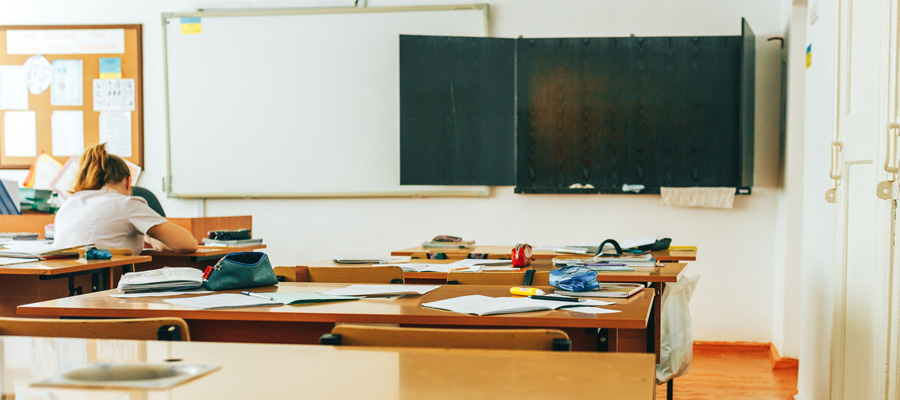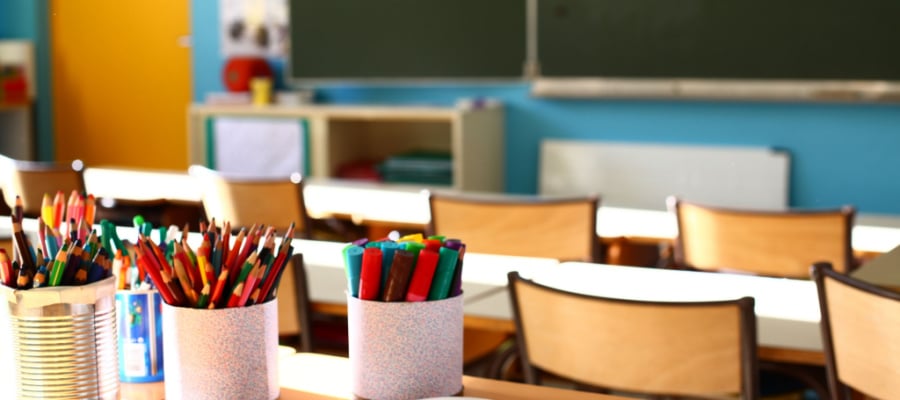Mind the gap: Losses in international student tuition shouldn’t lead to teacher layoffs

The COVID-19 pandemic has upended public education around the world, touching every facet of school life. In British Columbia, while some students cautiously returned to classrooms in June, many international students instead returned to their home countries. As school districts across the province anxiously watch international tuition revenues shrink, many are contemplating or even implementing layoffs and other cuts. Coquitlam, for example, has already signalled that it will lay off 42 teachers due to a projected loss of one third of its international students.
Layoffs, however, are a grave mistake in the midst of the pandemic-induced economic crisis. They are very damaging both to public education and economic recovery.
As school districts across the province anxiously watch international tuition revenues shrink, many are contemplating or even implementing layoffs and other cuts.
In terms of education, physical distancing necessary to keep children and education workers safe will require more, not less, staffing and supports. Schools will need every teacher. In terms of the broader economy, public spending will be the driving force in getting us out of the deepest crisis since the Great Depression. Budget cuts and any resulting job losses are the last thing school districts should be considering.
Cuts by school districts also stand in stark contrast to the message from BC Premier John Horgan, who on May 7th stated that regarding teaching positions in the province, “Certainly, we’re not contemplating layoffs. Quite the contrary.” Rather than allow school districts to lay off teachers, the provincial government should cover any revenue losses for the upcoming school year as an emergency measure. At the same time, the province must reform the international student program for the following years, creating a provincial program that replaces the current system of inequity and competition between school districts.
A faulty market-based model
International tuition has been an increasingly important source of revenue for British Columbia school districts since the turn of the millennium. During a decade and a half of austerity beginning with Premier Gordon Campbell’s Liberal government, school districts were actively encouraged to patch gaps due to provincial underfunding by competing for ever more out-of-country students. Today these programs charge students on average $15,000 per year in tuition and shore up underfunded regular programming.
Budget cuts and any resulting job losses are the last thing school districts should be considering.
In 2018–19, tuition fees from out-of-country students generated $260 million for districts in BC, or five per cent of total revenues—a significant amount, but one also very unequally distributed. Three districts—West Vancouver, Coquitlam and Burnaby—rely on international tuition for over ten per cent of total revenues while ten school districts have no international revenues and 17 more generate less than one per cent of overall revenues from international fees. Metro Vancouver, southern Vancouver Island and a few more remote areas with proximity to outdoor recreation are simply more attractive to international students in a competitive, “market-based” model.
This model is inherently inequitable and inherently unstable. Just one year ago, a BCTF research report highlighted the risks:
“Basing funding on a market model produces vulnerabilities to external conditions…An international financial crisis or a global outbreak of illness such as SARS could create a precipitous fall in the numbers of students.”
The coronavirus exposes inequities
The precise impacts of the COVID-19 pandemic on school district revenues from international tuition are still unknown, but reasonable estimates are possible based on information trickling out from school districts. Coquitlam, already mentioned, is projecting a 32 per cent drop for next year. Greater Victoria has estimated that around 40 per cent of international students may not return for 2020–21, leading to a proportional loss of revenues. And the Sea to Sky school district, home to Squamish and Whistler, was drafting a budget with a 73 per cent drop in international student fees.
If half of all international students do not return in September, districts across the province stand to lose approximately $130 million. A loss of one-third of international students would leave a gap just shy of $100 million, whereas a loss of two-thirds would approach $200 million. Given the travel restrictions still in place, there is good reason to believe the budgetary hit will be significant.
If half of all international students do not return in September, districts across the province stand to lose approximately $130 million.
A drop in revenues of this magnitude could have a major impact on teaching staff. A loss of one-third to two-thirds of international students would potentially translate to lay-offs of between 450 and 900 teachers, and more if teacher lay-offs absorb the bulk of revenue losses. Some of these lay-offs may be cushioned by not hiring replacements for retiring teachers and other “redundancies”, but many will be outright job losses—job losses in the midst of an on-going economic crisis. Without support from the provincial government, districts will be forced to fire teachers, education assistants and other staff.
Big losses, bigger costs
Laying off teachers and other school staff would negatively impact both public health and the economy at a time when both need all the support they can get. With the coronavirus pandemic ongoing into the 2020–21 school year, BC schools will be adapting to physical distancing and other measures to limit the rate of new coronavirus infections. Fewer teachers make effective implementation of these measures, including smaller classes, much more difficult.
Public spending, including on K-12 education, will be the fulcrum around which any recovery takes place.
Any job losses right now are also bad news for the provincial economy: people need incomes, and businesses need demand for goods and services. Public spending, including on K-12 education, will be the fulcrum around which any recovery takes place. By retaining teachers and other public sector workers, the government supports demand, supports incomes, and ultimately generates investment and jobs.
Recovery and reconstruction will be a long process and expanded public services will be crucial to a more just economy. BC has a unique opportunity to build a more resilient public education system, one that finally overcomes the decade and a half of suffocating austerity that accompanied the start of the current millennium.
Short-term fix, long-term solution
In the short term, the provincial government should make districts that lose international fees whole. Covering a loss of even half of international tuition revenue in the coming school year would take just 0.2 of the pre-coronavirus BC budget or 0.04 per cent of provincial GDP and should be part of the BC’s crisis economic stimulus measures.
This, however, is a stop-gap that leaves intact a broken and inequitable international student recruitment system. The provincial government should use this moment as an opportunity to create a provincial international student program that overcomes the current system of competition and inequity between districts.
BC has a unique opportunity to build a more resilient public education system, one that finally overcomes the decade and a half of suffocating austerity that accompanied the start of the current millennium.
International students bring much to the diversity of our public education system and their presence should not be an object of financial competition. BC needs a unified provincial program that distributes international tuition revenues equitably across the province and ensures that all districts have the opportunity to host international students, providing equity of access to diverse cultures as part of the educational experience for both BC and out-of-country students. A new provincial program would also be better able to handle future shocks, whether another wave of COVID-19, another pandemic or an economic crisis.
The current crisis in school district budgets exposed by the coronavirus pandemic is completely avoidable. In a public health and economic crisis, it is the responsibility of the provincial government to immediately mend the gaps in district funding, guarantee teaching positions are not lost and ensure the safety of students, teachers and our communities.


